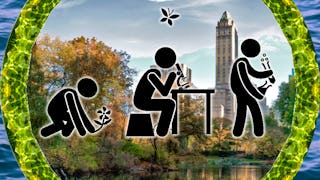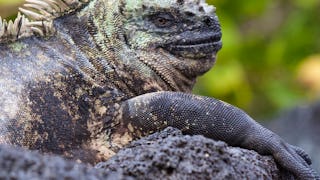What Is Mindfulness? Strategies for Work and Daily Life
February 22, 2025
Article





Instructors: Joel Cracraft, Ph.D.
Instructor ratings
We asked all learners to give feedback on our instructors based on the quality of their teaching style.


28,173 already enrolled
Included with 
(326 reviews)
(326 reviews)

Add to your LinkedIn profile
1 quiz, 4 assignments

How are all of the species living on Earth today related? How does understanding evolutionary science contribute to our well-being? In this course, participants will learn about evolutionary relationships, population genetics, and natural and artificial selection. Participants will explore evolutionary science and learn how to integrate it into their classrooms.
1 video3 readings
The first module of the course introduces Charles Darwin’s revolutionary concept of a “tree of life” depicting the evolution of all life from a common ancestor; how evolutionary trees depict relationships among organisms; and how new species are formed. You will explore resources for discovering and addressing student misconceptions about evolution.
4 videos3 readings1 quiz1 assignment
You will learn about Darwin’s second breakthrough: that adaptation via natural selection is the basic mechanism of evolution. You’ll go behind the scenes with Dr. Cracraft to see how evolutionary biologists use the Museum’s collections. Lastly, you’ll choose a topic from the course and explain how to use it as empirical evidence that supports common ancestry and biological evolution.
7 videos1 reading1 assignment1 peer review
You will learn about the role of extinction in evolution, and find out what the relatedness of major groups of living things reveals about the history of life. You’ll also watch videos of scientists at work and learn how to use them in your classroom.
4 videos2 readings1 assignment
This module explores the rich variety of hominids on the tree of life, along with how and when different human species - including Homo sapiens - migrated around the world. You’ll also learn strategies for teaching evolution in culturally diverse classrooms.
4 videos3 readings1 assignment
1 video3 readings
Add this credential to your LinkedIn profile, resume, or CV. Share it on social media and in your performance review.
We asked all learners to give feedback on our instructors based on the quality of their teaching style.




The American Museum of Natural History is one of the world’s preeminent scientific, educational and cultural institutions. Since its founding in 1869, the Museum has advanced its global mission to discover, interpret, and disseminate information about human cultures, the natural world, and the universe through a wide-ranging program of scientific research, education, and exhibition.

Universiteit Leiden
Course

Rice University
Course

University of Colorado Boulder
Course

Duke University
Course




326 reviews
77.53%
18.46%
2.76%
1.23%
0%
Showing 3 of 326
Reviewed on Apr 7, 2021
This was an excellent course that was well thought out when created. It challenges participants to fully understand the science content at her/his own pace!
Reviewed on Jul 13, 2017
It is a very interesting course and is presented by great teachers. Would definitely recommend to any one interested in evolution.
Reviewed on Aug 18, 2020
The teachers are really wonderful here, such is there energy that i could watch their presentation with great interest.

Unlimited access to 10,000+ world-class courses, hands-on projects, and job-ready certificate programs - all included in your subscription
Earn a degree from world-class universities - 100% online
Upskill your employees to excel in the digital economy
Access to lectures and assignments depends on your type of enrollment. If you take a course in audit mode, you will be able to see most course materials for free. To access graded assignments and to earn a Certificate, you will need to purchase the Certificate experience, during or after your audit. If you don't see the audit option:
The course may not offer an audit option. You can try a Free Trial instead, or apply for Financial Aid.
The course may offer 'Full Course, No Certificate' instead. This option lets you see all course materials, submit required assessments, and get a final grade. This also means that you will not be able to purchase a Certificate experience.
When you purchase a Certificate you get access to all course materials, including graded assignments. Upon completing the course, your electronic Certificate will be added to your Accomplishments page - from there, you can print your Certificate or add it to your LinkedIn profile. If you only want to read and view the course content, you can audit the course for free.
You will be eligible for a full refund until two weeks after your payment date, or (for courses that have just launched) until two weeks after the first session of the course begins, whichever is later. You cannot receive a refund once you’ve earned a Course Certificate, even if you complete the course within the two-week refund period. See our full refund policy.
Yes. In select learning programs, you can apply for financial aid or a scholarship if you can’t afford the enrollment fee. If fin aid or scholarship is available for your learning program selection, you’ll find a link to apply on the description page.
Financial aid available,